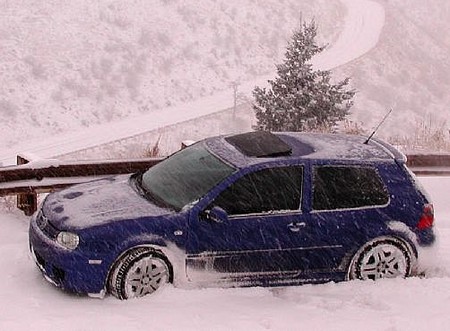During the freezing cold winter days, the ground is all covered with snow, making the view snowy white and extremely dull. There are also severe form of winter like blizzards and winter storms, adding to the already bad climate. Driving during this extreme weather requires 100% attention to keep you away from accidents. Read through the following tips as it tells you how to drive in the snow.

The snow-covered roads get more slippery when there is an increase in temperature and the snow starts to melt. It is very important to check your vehicle and make sure that it is functioning well before you start your journey. Check the breaks, fog lights, wipers and tires if they are all in tip-top condition. Top up your windscreen washer with de-icing solutions to prevent ice from building up on your windscreen. It helps to clean up the windscreen and to ensure that nothing is obstructing your view.
You have to double check the fuel tank to make sure that it is fully filled. Keep extra blankets and food in the car in case if the car breaks down, you have something to keep you warm. The driver should be wearing the seat belt at all times as it helps to save your previous life. These are the precautions that you should do before you embark on your journey.
When the road is slippery, do not hit the brakes hard at once because it may cause your vehicle to lose control. If you need to pull over, step on the brake and slow down gradually so that the drivers behind you have ample time to avoid banging into you. Do not accelerate too much while driving in the snow as it may again cause you to lose control of your vehicle. Drive with low speed and switch to lower gears to prevent speeding. Slow down when you are heading towards a curve or a corner. These are the basics knowledge on how to drive in the snow.
Give yourself extra time or start on your journey earlier. Do not schedule anything on the day of travelling because appointments may lead to speeding. Drive safely along the road and if you feel that you are not feeling well or you are dozing off, stop by a restaurant or petrol station and get some rest. If possible, get someone to go on the journey with you so that you can take turns in driving.
If you start to lose control of the car, do not hit the brakes all at once. Panicking will only make the condition worse. Try to slow down the speed of your car by releasing the fuel paddle, and then gradually press on your brakes. Hold on to the steering wheel because if you let go of it, your car might swift off the curb. Also, bring a cell phone along so that you can ask for help if there are any emergencies.









